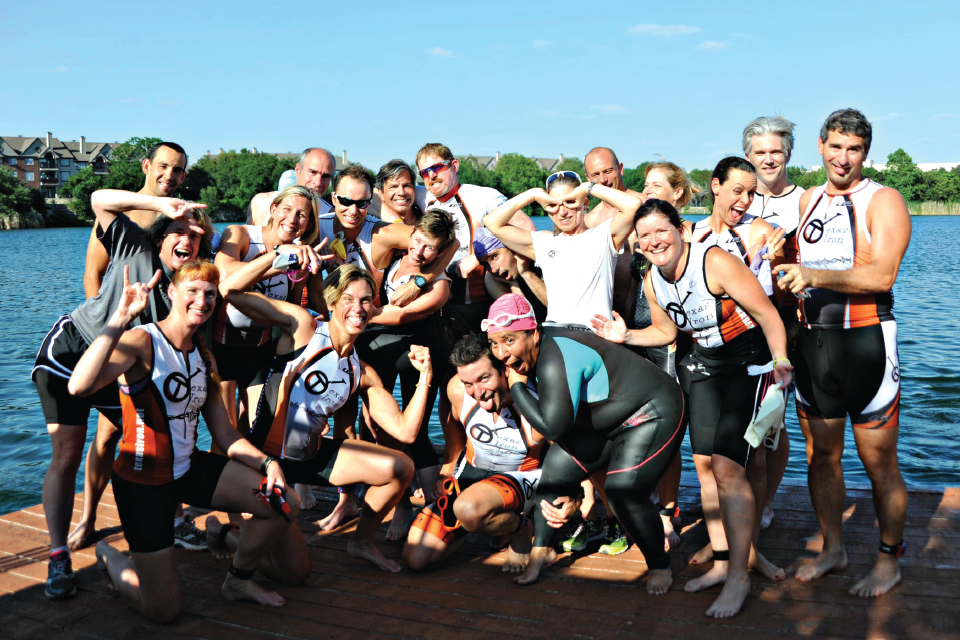Keeping Tri Training Simple

Simplicity. A single word that is defined as “the quality of being easy to understand or use; the state or quality of being plain or not fancy or complicated; something that is simple or ordinary but enjoyable.” Simplicity is a word that can have a lot of impact if embraced, especially in an active lifestyle.
How many multisport athletes “keep it simple?” Not enough in my personal opinion, but if they did, the benefits would be a tremendous boost in fitness and performance without over-complicating the basics.
How does one keep it simple, especially in a world bombarded by obligations of work, family, and little spare time for training? One way is to incorporate unique workouts and events that don’t take a lot of equipment, are easy to get to during the day, and comfortably executed with a well-prepared plan. A favorite with respect to this philosophy is the monthly Splash-n-Dash at Pure Austin Quarry. During the summer months, every third Tuesday at 6 p.m., about 200 multisport athletes start from the quarry dock to conquer a 750-meter swim, followed by a 3K run. The only equipment necessary to participate is something to swim and run in, a set of goggles, and a pair of running shoes. No bike, no big gear, no production other then a few simple accessories to participate in what is a fun and amazing workout.
 Before diving into the aquathon, however, it’s a good idea to get some basic training and exposure to the elements that are part of this event. Work with a well-recommended swim instructor to make sure stroke form and technique are correct. This provides optimal swim training, which allows one to build up endurance for a longer, harder swim effort. Poor swim form and technique will always lead to injuries and lackluster performances. It’s also important to get open-water swim exposure, which will reduce the anxiety associated with mass starts. Once form is corrected and open water swim exposure is incorporated into a training plan, it’s easy to start building up yardage with two to three swims per week.
Before diving into the aquathon, however, it’s a good idea to get some basic training and exposure to the elements that are part of this event. Work with a well-recommended swim instructor to make sure stroke form and technique are correct. This provides optimal swim training, which allows one to build up endurance for a longer, harder swim effort. Poor swim form and technique will always lead to injuries and lackluster performances. It’s also important to get open-water swim exposure, which will reduce the anxiety associated with mass starts. Once form is corrected and open water swim exposure is incorporated into a training plan, it’s easy to start building up yardage with two to three swims per week.
When it comes to the second leg of the aquathon, the 3K run, it’s important to mix in fast run intervals, which are best performed in a group setting. These workouts can be logged in less then one hour and contain tremendous bang for the buck with regard to fitness gains. Running with a group helps push limits, forcing an athlete beyond any self-imposed boundaries typically experienced when training alone. Building in three runs per week, with one to two containing intervals and tempo work, will lead to a successful Splash-n-Dash event.
The overall training plan for an athlete looking to race at the monthly aquathon should have two to three runs and two swims per week. This gives at least one day off during the week and enough training stimulation to build on fitness over the summer months. The other side benefit of participating in the monthly Splash-n-Dash is called “race fitness.” Race fitness is the boost in performance and fitness that happens after participating in an all-out effort, like that experienced at Splash-n-Dash, and adequate recovery has taken place. Numerous athletes use multiple short events to gain race fitness as they progress through a season. Plus, these experiences provide more exposure to the mental aspects of races that have open-water swims or short, hard runs. The more often athletes are exposed to these elements, the more at ease they will be with the mental components of a race, and thus better able to focus on physical performance.
When the next aquathon or Splash-n-Dash comes up, throw your swimsuit and running shoes into your workout bag before you leave home. Participation takes very little gear preparation, hardly anytime to set up after a crazy day of family and work, and provides one butt-kicking workout. Simplicity is key, and an aquathon is just that at its finest…simple but effective. Train well, train simply, and most importantly, have fun.
Aquathon Training Week
Tuesday
Short run intervals.
Example workout:
15 minutes of warm-up. Main set is 5-, 4-, 3-, 2-, 1-minute fartlek intervals building in effort with 1-minute rest after each interval. 15 minutes of warm-down.
Wednesday
Swim intervals.
Example workout:
Main set is 6–8 x 100 on 15 seconds rest. Each 100 done as 25 fast sprint/50 race pace tempo effort/25 easy recovery.
Thursday
Tempo run.
Example workout:
15 minutes of warm-up followed by 20 minutes of building tempo run, ending with strong effort. 10–15 minutes of warm-down.
Friday
Easy swim.
Example workout: Perfect opportunity to hit an open water swim, keeping an easy, relaxed effort, and focusing on good form.
Saturday
Cross-training day.
Example workout:
Something different and fun. Examples include biking, hiking, yoga, group fitness class, or just chasing kids around.
Sunday
Easy base run day.
Example workout:
30– 60 minute base run, keeping an easy effort and focusing on good form.
Monday
Day Off






